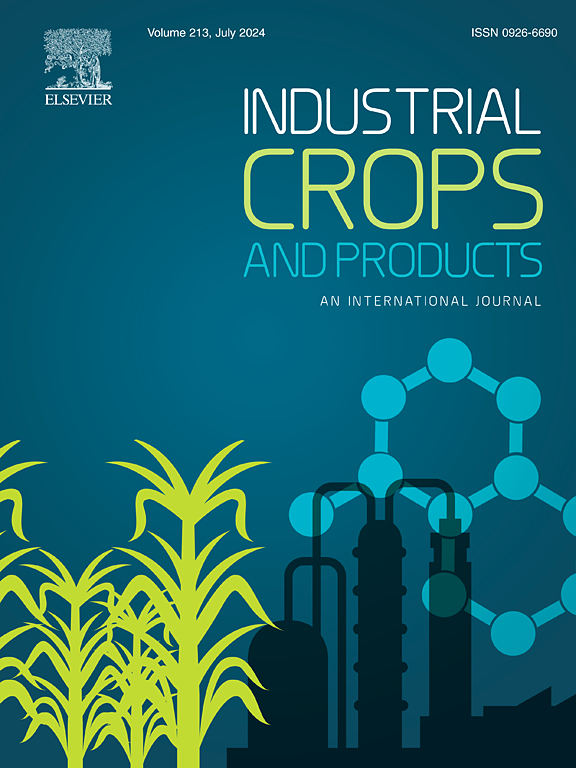湖南油茶人工林增产的启示——基于分布与产量影响因素
IF 5.6
1区 农林科学
Q1 AGRICULTURAL ENGINEERING
引用次数: 0
摘要
湖南省是中国油茶种植面积最大的省份,但对油茶分布及产量影响因素的研究较少。本研究分析了2018 - 2022年湖南省油桐的种植面积、总产量和单产,并探讨了影响这些变量的关键因素。全省油油树种植面积150万公顷,产量120万吨,分别占全国的32.9% %和40.2% %。核心种植区在衡阳市,产量为0.9 t ha−1。油桐主要种植在红、紫色土壤和年温较高的丘陵地区。随机森林分析确定了影响油松产量的主要环境因子,包括10 - 12月平均降雨量、温度和太阳辐射、年平均太阳辐射和温度、7 - 9月平均降雨量、海拔、坡向、粘土含量和阳离子交换量(CEC)。油松单产与10 ~ 12月平均降雨量、气温、太阳辐射、土壤粘粒含量、CEC呈显著正相关(p <; 0.05)。试验结果表明,油松人工林中,南坡(坡向为180°)单株产量最高,为4.7 kg。与单作相比,间作花生和决明子的产量分别提高了39.4 %和28.1 %。这些发现为提高油松人工林产量提供了有价值的见解。本文章由计算机程序翻译,如有差异,请以英文原文为准。

Implications for yield enhancement of Camellia oleifera plantation in Hunan Province: Based on distribution and yield influencing factors
Hunan Province has the largest Camellia oleifera planting area in China, yet studies on the factors affecting its distribution and yield are limited. This study analyzed the planting area, total yield, and yield per unit area of C. oleifera in Hunan Province from 2018 to 2022, and explored the key factors influencing these variables. The total planting area and yield of C. oleifera in the province were 1.5 million hectares and 1.2 million tons, representing 32.9 % and 40.2 % of the China’s national totals, respectively. The core planting area was in Hengyang City, with a yield of 0.9 t ha−1. C. oleifera was mainly planted in hilly regions with red and purple soils and high annual temperature. Random forest analysis identified key environmental factors influencing the yield of C. oleifera, including mean rainfall, temperature, and solar radiation from October to December, mean annual solar radiation and temperature, mean rainfall from July to September, altitude, aspect, clay content, and cation exchange capacity (CEC). The yield per unit area of C. oleifera was positively correlated with mean rainfall, temperature, and solar radiation from October to December, soil clay content, and CEC (p < 0.05). The experimental results showed that in the C. oleifera plantation, the highest yield per plant (4.7 kg) was on the south-facing slope (Aspect = 180°). Intercropping with Arachis hypogaea and Cassiae Semen increased yields by 39.4 % and 28.1 %, respectively, compared to monoculture. These findings offer valuable insights for improving the yield of C. oleifera plantation.
求助全文
通过发布文献求助,成功后即可免费获取论文全文。
去求助
来源期刊

Industrial Crops and Products
农林科学-农业工程
CiteScore
9.50
自引率
8.50%
发文量
1518
审稿时长
43 days
期刊介绍:
Industrial Crops and Products is an International Journal publishing academic and industrial research on industrial (defined as non-food/non-feed) crops and products. Papers concern both crop-oriented and bio-based materials from crops-oriented research, and should be of interest to an international audience, hypothesis driven, and where comparisons are made statistics performed.
 求助内容:
求助内容: 应助结果提醒方式:
应助结果提醒方式:


